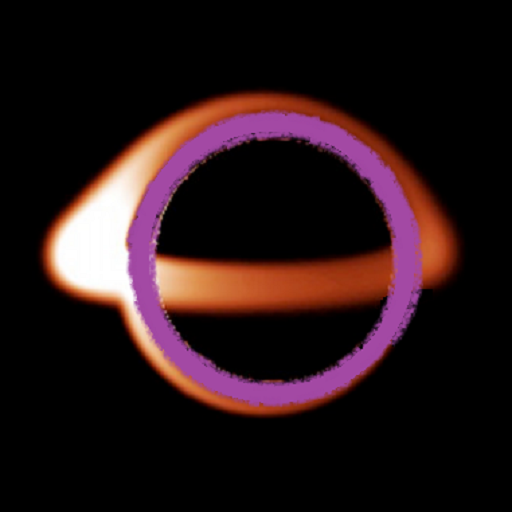In my last post, I talked about how the concept of the Omniverse is like plate tectonics – when you look at the big picture, everything seems to fit together. I compared the mechanism of the Omniverse, on the very large scale, to an atom, on the small scale. Applying it to the scale of the universe, I explained how the universe has a lensing effect which gives us the appearance of accelerating expansion. There were many more discoveries through the years on scales everywhere in-between, that weren’t mentioned yet. When you can see the similarities on every scale from very small to very large, you see a repeating pattern. This pattern is the basic framework for the Omniverse: The universe is part of a larger overall structure. It is basically a field of probability outside of another central object.
A huge discovery in astronomy was when it was found that the galaxy contains a supermassive central black hole. Then we started seeing the effects of one in every galaxy. Recently, we have observed gas clouds in our own galaxy travelling towards the central black hole and other surrounding black holes, providing confirmation of the presence of the central black hole. In this case, our solar system is in the field of stars surrounding the black hole – in the habitable zone of the galaxy. In the Omniverse model, the central object could be a white hole, with repulsive energies rather than attractive. This allows the singularity that is our universe to be stable prior to its inflationary Big Bang. The universe occurs in the field outside of the central object (like the electron and the nucleus from the previously discussed).
When you look at the scale of the solar system, you find similar features. In the early solar system formation, clouds of gases around the sun formed objects like planets, moons, and asteroids. Even huge reserves of water exist in the Oort Cloud, which is full of comets on the outermost edge of the solar system. Our planet lies right in the habitable zone. In the Omniverse model, the habitable zone surrounds the central source, and right where the singularity exits the primary field and enters a second low energy field, the Big Bang occurs. This is similar to a coronal mass ejection of the eruptions of energy from the sun (pictured).
This is where I found another synchronicity between the Omniverse model and a great discovery on the very, very small scale: the Higgs Boson. When its discovery was announced in 2012, I researched to find out why it was so important that they called it the “God Particle.” The answer was that it was short for goddamn particle, but the Higgs mechanism was the same as the Omniverse on a subatomic scale! In the case of the goddamn particle, it involves a field that permeates space everywhere. When particles interact with the field, the Higgs boson comes in and out of existence in a flash, but the mechanism gives the particle mass. When the particle acquires mass, it falls to a state of lower energy. I found this was a case without universe when it was a singularity in the primary field. The secondary field is a lower energy, and when the singularity encounters it, it acquires space. This becomes the inflationary phase of the Big Bang, when space unfolds itself faster than light. Then in a flash, the Big Bang happens!
To study the Omniverse, all we need to do is to observe things in our own universe on all scales possible. When you visualize how the patterns repeat, you can see that a model such as the Omniverse is feasible. The next step is to see if it is testable and observable. It gives us a new direction to study, and it has the potential to make the current view of the universe obsolete – while agreeing with current physics of the known universe. Just like when we thought the Earth was flat and if you fall off if you sail to the edge, our current understanding of the universe tells us that it expands infinitely along the edge, and if we go past its event horizon, we never can return. Objects are observed to accelerate past the event horizon in our universe. But in The Grand Slam Theory of the Omniverse, I show how this is an effect of the bigger picture. The curvature of the universe causes a lensing effect. We won’t ever fall off of the edge as the universe spreads. I am about to redefine everything about how we see the universe. All you have to do to understand it is to be present.
“Love the universe you’re in”


